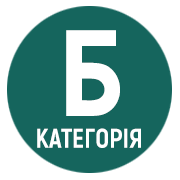VARIETIES OF PROFANITY IN THE WORKS OF ANDRII KUZMENKO
DOI:
https://doi.org/10.32782/2412-933X/2024-XXI-3Keywords:
profanity, colloquial language, surzhyk, sociolect, invective vocabularyAbstract
The culture of communication is a distinctive feature of society. However, neither the improvement of living conditions, nor the level of culture, education, or social status affect the fact that profanity is present in people’s speech. The fact of its use is explained by the possibility of expressing a wide variety of emotions, emphasizing stories, sharing impressions, which is the result of the manifestation of personality. Therefore, philological scientists cannot ignore it, regardless of whether they like this vocabulary or not. The article examines the functioning of types of profanity in the prose works of Andrii Kuzmenko, in particular colloquial language, sociolects, obscene vocabulary, as well as the specifics of the ideological and stylistic load of non-literary elements. Scientific research has proven that today profanity is actively used in informal texts and serves as a means of conveying the flavor of the speech of the Ukrainians, regardless of what evaluative judgments are put forward by scientists and critics. While the latter argue over the question of whether colloquialisms, slang, surzhyk, sociolects, invective vocabulary clogs the original Ukrainian language, or enriches the tool for conveying the realities of life, such texts find their readers and become a fullfledged part of the literary process. And those artists who seek a vivid and realistic reproduction of reality cannot ignore it. The research made it possible to understand the specifics of Andrii Kuzmenko’s authorial style (identify the main types of profanity, structure it according to functional and stylistic features), which attracts listeners and readers. A special feature of this style is the use of colloquial language, surzhyk, sociolect, and invective vocabulary. Thanks to this, the described events are depicted realistically, creating the effect of a story of a well-known friend. The author does not try to idealize or condemn the speakers of such vocabulary, moreover, he uses it himself. Colloquial language, surzhyk, sociolect and invective vocabulary play a stylistic function and are also means of creating an emotional mood and conveying the author’s mood to the depicted story. Andrii Kuzmenko also managed to harmoniously combine these types of profanity with various artistic means and achieve the maximum expressiveness of the works.
References
Глазова С. М., Скуратовська Д. В. Теоретичні засади дослідження просторіччя як соціолекту ненормативної лексики. Science and innovation of modern world. Proceedings of the 2nd International scientific and practical conference. Cognum Publishing House. London, United Kingdom. 2022. P. 703−710.
Єльнікова Н. І. Просторічна лексика у системі сучасної української мови. Культурне розмаїття: матеріальна та нематеріальна культура різних країн світу : матеріали ХІ Міжнар. наук.-практ. конф., м. Харків, 22 трав. 2019. Харків, 2019. С. 25–26.
Остроушко О. А. Суржик у духовному світі сучасних українців. Актуальні проблеми філології і методики викладання мов : зб. наук. пр. Кривий Ріг, 2003. С. 79–86.
Скрябін К. Повне зібрання творів. Харків : Фоліо, 2019. 444 с.
Скуратовська Д. В., Глазова С. М. Функціювання табуйованої лексики у творах Кузьми Скрябіна. Наука ІІІ тисячоліття: пошуки, проблеми, перспективи розвитку : збірник тез. мат. VІ Міжнародної науково-практичної інтернет-конференції (20–21 квітня 2023 року) : Бердянськ : БДПУ, 2023. С. 345−346.
Ставицька Л. О., Труб В. Суржик: суміш, мова, комунікація. Українсько-російська двомовність. Лінгвосоціокультурні аспекти : зб. наук. пр. / за заг. ред. Л. Ставицької. Київ: Пульсари, 2007. С. 31–120.






